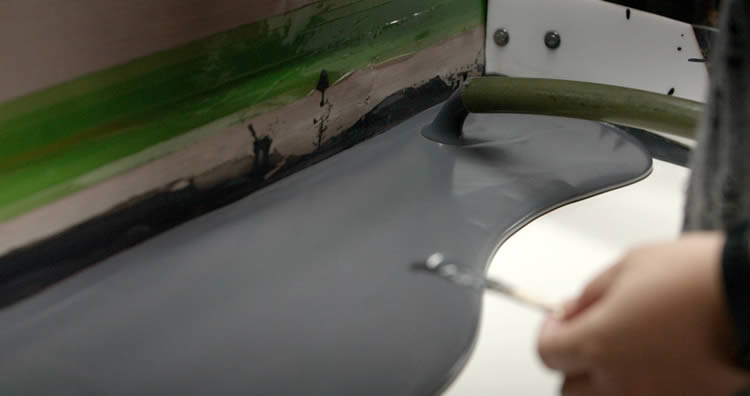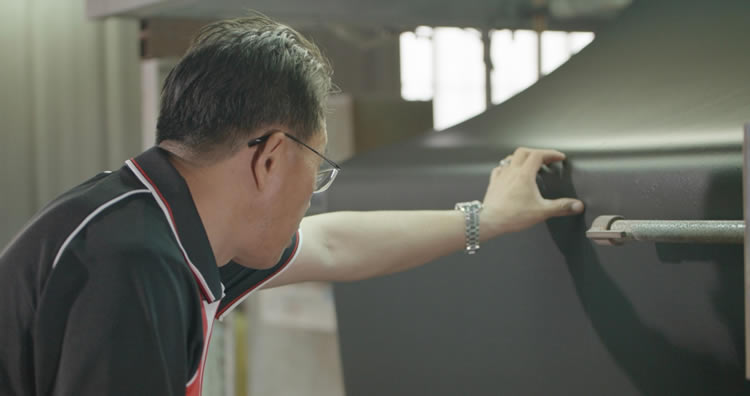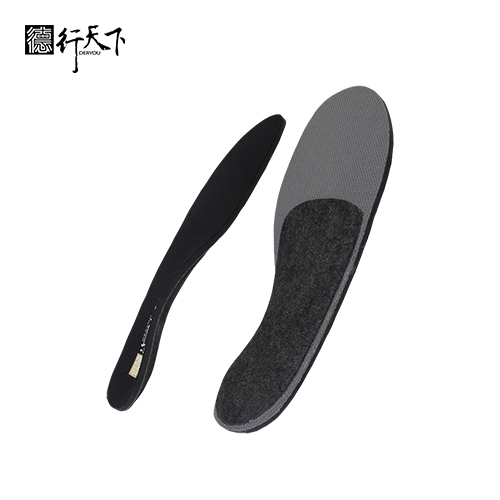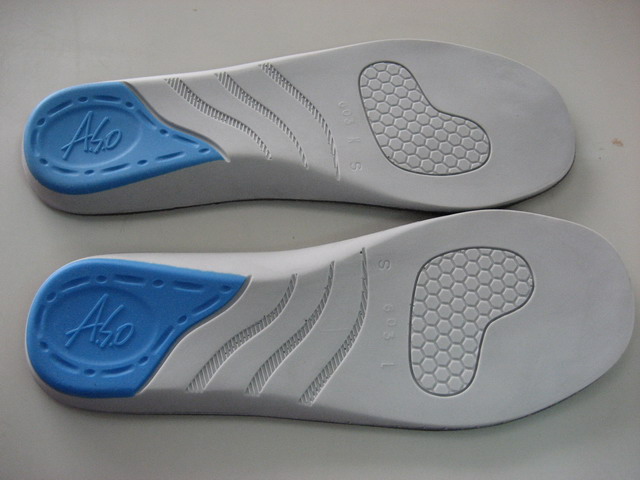Introduction – Company Background
GuangXin Industrial Co., Ltd. is a specialized manufacturer dedicated to the development and production of high-quality insoles.
With a strong foundation in material science and footwear ergonomics, we serve as a trusted partner for global brands seeking reliable insole solutions that combine comfort, functionality, and design.
With years of experience in insole production and OEM/ODM services, GuangXin has successfully supported a wide range of clients across various industries—including sportswear, health & wellness, orthopedic care, and daily footwear.
From initial prototyping to mass production, we provide comprehensive support tailored to each client’s market and application needs.
At GuangXin, we are committed to quality, innovation, and sustainable development. Every insole we produce reflects our dedication to precision craftsmanship, forward-thinking design, and ESG-driven practices.
By integrating eco-friendly materials, clean production processes, and responsible sourcing, we help our partners meet both market demand and environmental goals.


Core Strengths in Insole Manufacturing
At GuangXin Industrial, our core strength lies in our deep expertise and versatility in insole and pillow manufacturing. We specialize in working with a wide range of materials, including PU (polyurethane), natural latex, and advanced graphene composites, to develop insoles and pillows that meet diverse performance, comfort, and health-support needs.
Whether it's cushioning, support, breathability, or antibacterial function, we tailor material selection to the exact requirements of each project-whether for foot wellness or ergonomic sleep products.
We provide end-to-end manufacturing capabilities under one roof—covering every stage from material sourcing and foaming, to precision molding, lamination, cutting, sewing, and strict quality control. This full-process control not only ensures product consistency and durability, but also allows for faster lead times and better customization flexibility.
With our flexible production capacity, we accommodate both small batch custom orders and high-volume mass production with equal efficiency. Whether you're a startup launching your first insole or pillow line, or a global brand scaling up to meet market demand, GuangXin is equipped to deliver reliable OEM/ODM solutions that grow with your business.



Customization & OEM/ODM Flexibility
GuangXin offers exceptional flexibility in customization and OEM/ODM services, empowering our partners to create insole products that truly align with their brand identity and target market. We develop insoles tailored to specific foot shapes, end-user needs, and regional market preferences, ensuring optimal fit and functionality.
Our team supports comprehensive branding solutions, including logo printing, custom packaging, and product integration support for marketing campaigns. Whether you're launching a new product line or upgrading an existing one, we help your vision come to life with attention to detail and consistent brand presentation.
With fast prototyping services and efficient lead times, GuangXin helps reduce your time-to-market and respond quickly to evolving trends or seasonal demands. From concept to final production, we offer agile support that keeps you ahead of the competition.
Quality Assurance & Certifications
Quality is at the heart of everything we do. GuangXin implements a rigorous quality control system at every stage of production—ensuring that each insole meets the highest standards of consistency, comfort, and durability.
We provide a variety of in-house and third-party testing options, including antibacterial performance, odor control, durability testing, and eco-safety verification, to meet the specific needs of our clients and markets.
Our products are fully compliant with international safety and environmental standards, such as REACH, RoHS, and other applicable export regulations. This ensures seamless entry into global markets while supporting your ESG and product safety commitments.
ESG-Oriented Sustainable Production
At GuangXin Industrial, we are committed to integrating ESG (Environmental, Social, and Governance) values into every step of our manufacturing process. We actively pursue eco-conscious practices by utilizing eco-friendly materials and adopting low-carbon production methods to reduce environmental impact.
To support circular economy goals, we offer recycled and upcycled material options, including innovative applications such as recycled glass and repurposed LCD panel glass. These materials are processed using advanced techniques to retain performance while reducing waste—contributing to a more sustainable supply chain.
We also work closely with our partners to support their ESG compliance and sustainability reporting needs, providing documentation, traceability, and material data upon request. Whether you're aiming to meet corporate sustainability targets or align with global green regulations, GuangXin is your trusted manufacturing ally in building a better, greener future.
Let’s Build Your Next Insole Success Together
Looking for a reliable insole manufacturing partner that understands customization, quality, and flexibility? GuangXin Industrial Co., Ltd. specializes in high-performance insole production, offering tailored solutions for brands across the globe. Whether you're launching a new insole collection or expanding your existing product line, we provide OEM/ODM services built around your unique design and performance goals.
From small-batch custom orders to full-scale mass production, our flexible insole manufacturing capabilities adapt to your business needs. With expertise in PU, latex, and graphene insole materials, we turn ideas into functional, comfortable, and market-ready insoles that deliver value.
Contact us today to discuss your next insole project. Let GuangXin help you create custom insoles that stand out, perform better, and reflect your brand’s commitment to comfort, quality, and sustainability.
🔗 Learn more or get in touch:
🌐 Website: https://www.deryou-tw.com/
📧 Email: shela.a9119@msa.hinet.net
📘 Facebook: facebook.com/deryou.tw
📷 Instagram: instagram.com/deryou.tw
Thailand custom product OEM/ODM services
Are you looking for a trusted and experienced manufacturing partner that can bring your comfort-focused product ideas to life? GuangXin Industrial Co., Ltd. is your ideal OEM/ODM supplier, specializing in insole production, pillow manufacturing, and advanced graphene product design.
With decades of experience in insole OEM/ODM, we provide full-service manufacturing—from PU and latex to cutting-edge graphene-infused insoles—customized to meet your performance, support, and breathability requirements. Our production process is vertically integrated, covering everything from material sourcing and foaming to molding, cutting, and strict quality control.Vietnam graphene product OEM service
Beyond insoles, GuangXin also offers pillow OEM/ODM services with a focus on ergonomic comfort and functional innovation. Whether you need memory foam, latex, or smart material integration for neck and sleep support, we deliver tailor-made solutions that reflect your brand’s values.
We are especially proud to lead the way in ESG-driven insole development. Through the use of recycled materials—such as repurposed LCD glass—and low-carbon production processes, we help our partners meet sustainability goals without compromising product quality. Our ESG insole solutions are designed not only for comfort but also for compliance with global environmental standards.Thailand neck support pillow OEM
At GuangXin, we don’t just manufacture products—we create long-term value for your brand. Whether you're developing your first product line or scaling up globally, our flexible production capabilities and collaborative approach will help you go further, faster.Pillow OEM for wellness brands Taiwan
📩 Contact us today to learn how our insole OEM, pillow ODM, and graphene product design services can elevate your product offering—while aligning with the sustainability expectations of modern consumers.Flexible manufacturing OEM & ODM Vietnam
PSU researchers found microplastics in Oregon seafood, highlighting the need for strategies to reduce environmental contamination. Microplastics contaminate edible tissues of Oregon seafood, posing health concerns. Researchers call for further studies, policy changes, and innovative filtration solutions to tackle this pervasive issue. Tiny particles shed from clothing, packaging, and other plastic products are increasingly making their way into the fish people consume, according to a new study by Portland State University (PSU) researchers. The findings underscore the urgent need for technologies and strategies to reduce microfiber pollution entering the environment. The research, conducted in PSU’s Applied Coastal Ecology Lab and led by Elise Granek, a professor of environmental science and management, builds on earlier studies that investigated the presence of microplastics in bivalves such as Pacific oysters and razor clams. This latest study shifts focus to commonly consumed finfish and crustaceans. The project was led by Summer Traylor, who earned a master’s degree in environmental management in 2022, with support from Marilyn Duncan, an undergraduate environmental science student who graduated in 2024. The team aimed to address gaps in knowledge about microplastic contamination in Oregon’s finfish and shellfish. They also sought to examine variations across trophic levels—categories that classify a fish’s position in the food chain—and how these microplastics ultimately reach consumers. Traylor’s research helped her land a job working for the National Oceanic and Atmospheric Administration (NOAA) after graduating from PSU, and Duncan has plans to continue microplastics research in graduate school. The team quantified anthropogenic particles, materials produced or modified by humans, that they found in the edible tissue of six species that are economically or culturally important in Oregon: black rockfish, lingcod, Chinook salmon, Pacific herring, Pacific lamprey, and pink shrimp. The researchers quantified anthropogenic particles that they found in the edible tissue of six species that are economically or culturally important in Oregon (clockwise from top left): Chinook salmon, lingcod, black rockfish, pink shrimp, Pacific herring, and Pacific lamprey. Credit: NOAA Fisheries, Oregon Department of Fish & Wildlife (black rockfish), and North Carolina Wildlife Resource Commission (lamprey) They compared particle concentrations across trophic levels and whether their position in the food web affected what and how much was contaminating their edible tissue as well as whether there were differences in samples acquired directly from research fishing vessels versus those from supermarkets and seafood vendors. Susanne Brander, an ecotoxicologist and associate professor in Oregon State University’s College of Agricultural Sciences, helped analyze and validate a subsample of suspected plastics in her lab. Findings on Microplastic Contamination The study, published in the journal Frontiers in Toxicology, found 1,806 suspected particles across 180 of 182 individual samples. Fibers were the most abundant, followed by fragments and films. Among the species sampled, pink shrimp, which filter-feed right below the surface of the water, had the highest concentrations of particles in their edible tissues. Chinook salmon had the lowest concentrations, followed by black rockfish and lingcod. “We found that the smaller organisms that we sampled seem to be ingesting more anthropogenic, non-nutritious particles,” Granek said. “Shrimp and small fish, like herring, are eating smaller food items like zooplankton. Other studies have found high concentrations of plastics in the area in which zooplankton accumulate and these anthropogenic particles may resemble zooplankton and thus be taken up for animals that feed on zooplankton.” Though the group expected that the processing from catch to consumer would introduce additional contaminants from plastic packaging meant to preserve seafood, that wasn’t universally true across the species. The researchers rinsed off the fish fillets and shrimp, replicating what most people do at home before preparing them, suggesting that in some cases, additional contamination that may land on the surface during processing can be removed with rinsing. Call for Policy and Technological Interventions The study results, however, provide evidence of the widespread presence of particles in the edible tissues of Oregon’s marine and freshwater species. “It’s very concerning that microfibers appear to move from the gut into other tissues such as muscle,” Brander said. “This has wide implications for other organisms, potentially including humans too.” The researchers say the findings signal the need for both further studies to understand the mechanisms by which particles translocate into muscle tissue, which humans eat, as well as policy interventions to regulate anthropogenic particles. “This project established critical baseline data for West Coast fisheries stakeholders and highlighted how much we still do not know about these pervasive microplastic pollutants,” said Traylor, who now serves as a NOAA Corps Officer, helping collect baseline microplastic data in the Gulf of Mexico to further expand public knowledge and understanding. The authors are not advocating for people to stay away from seafood because, as Granek likes to remind people, microplastics are everywhere: in bottled water, beer, honey, beef, chicken, veggie burgers and tofu. “If we are disposing of and utilizing products that release microplastics, those microplastics make their way into the environment, and are taken up by things we eat,” she said. “What we put out into the environment ends up back on our plates.” That’s why Granek’s lab group is beginning to focus more on solutions. “We’re continuing to do work to understand the effects of anthropogenic particles on animals, but we’re also moving into experimental work to test what are effective solutions to reduce microplastics entering marine ecosystems,” she said. She’s leading a $1.9 million NOAA-funded project that is developing and testing washing machine, dishwasher, and clothes dryer filters that can serve as cost-effective filtration solutions. In another project funded by Oregon Sea Grant, six catch basin filters will be installed in stormwater drains in two coastal towns to determine their efficacy in trapping microplastics from road runoff before entering waterways. Brander’s lab is collaborating on both projects as well. Reference: “From the ocean to our kitchen table: anthropogenic particles in the edible tissue of U.S. West Coast seafood species” by Summer D. Traylor, Elise F. Granek, Marilyn Duncan and Susanne M. Brander, 19 November 2024, Frontiers in Toxicology. DOI: 10.3389/ftox.2024.1469995 The study was funded by Oregon Sea Grant.
Thanks to “quantum evolution,” darkling beetles have evolved into a spectacular array of different body shapes that we see today. Credit: Dr. Yun (Living) Li/ANU Darkling beetles have undergone rapid evolutionary changes over 150 million years, allowing them to adapt to diverse environments and become ecologically dominant. A large-scale genomic study of darkling beetles, a hyper-diverse group of over 30,000 species worldwide, has revealed a 150-million-year evolutionary history of one of Earth’s most ecologically significant yet overlooked creatures, according to new research from The Australian National University (ANU) and CSIRO. Scientists have long been captivated by the “extraordinary” diversity of darkling beetles – tiny critters that have lived since the age of the dinosaurs – and their ability to successfully adapt to and thrive in a range of diverse and harsh environments over hundreds of millions of years. But until now, it was not fully understood how beetles were able to evolve certain traits and abilities that allowed them to “conquer the world.” “Big Bang” Evolutionary Events According to lead author Dr. Yun (Living) Li, from ANU and CSIRO, darkling beetles underwent multiple “big bang” evolutionary events right from the start, allowing them to expand and colonize a vast range of terrestrial environments across Earth and rapidly evolve into a “spectacular array” of different body forms that we see today. “Primarily scavengers, darkling beetles play critical ecological roles as decomposers. But their habits are particularly diverse,” Dr. Li said. “Darkling beetles are masters of shape-shifting, displaying a wide array of body shapes from the wood-boring, cylindrical form that resembles a candlestick to surface-grazing, hemispherical forms reminiscent of a ping-pong ball.” DNA Analysis and Evolutionary Insights By analyzing darkling beetle DNA extracted from museum specimens, the researchers reconstructed an evolutionary tree looking back at 150 million years of evolution for more than 300 species. To understand the drivers of darkling beetle diversity, the researchers collected ecological information and quantified body shape variations by digitizing more than 900 specimens deposited at the Australian National Insect Collection (ANIC) at CSIRO. Quantum Evolution: Key to Adaptation Across the darkling beetle family tree, the researchers found substantial variations in the speed of darkling beetles’ body shape evolution, with some lineages displaying particularly fast evolution –what the researchers refer to as “quantum evolution.” This is what allowed darkling beetles to rapidly change their body shape over time to adapt to challenging new environments. Dr. Li said quantum evolution is the key to the exceptional “shape-shifting” abilities of darkling beetles. “This is how darkling beetles have been able to conquer a variety of environments which have changed over hundreds of millions of years, from tropical savannas and arid deserts to coastal dunes and mountain tops, and even our backyards,” Dr. Li said. “Our results show that quantum evolution occurred frequently across the evolutionary tree of darkling beetles. We discovered more than 60 rapid evolutionary jumps that are linked to ecological changes to highly specialized environments in which these beetles were living in. “Looking back in time, these beetles underwent periods of rapid bursts of evolution, particularly near the end of the Cretaceous–Paleogene mass extinction event that occurred about 66 million years ago, which wiped out more than 70 percent of all species on the planet.” Beetles: Dominating Earth’s Animal Life With more than 400,000 known species, beetles account for almost one-quarter of all animal life on Earth. Dr. Li said beetles “truly dominate the world”, both in terms of their diversity and ecological importance. “By looking into the evolutionary history of these small but hyper-diverse insects, we can draw a detailed picture of the evolution of diverse life forms on Earth,” Dr. Li said. “The rapid evolution of darkling beetles has helped them rise to global ecological dominance.” Reference: “Evolution across the adaptive landscape in a hyperdiverse beetle radiation” by Yun Li, Craig Moritz, Ian G. Brennan, Andreas Zwick, James Nicholls, Alicia Grealy and Adam Slipinski, 26 July 2024, Current Biology. DOI: 10.1016/j.cub.2024.06.080
The new findings challenge the prevailing view of human adaption. The researchers used ancient genomes to reveal new information about the human history of adaption. Ancient DNA, including samples from human remains that are around 45,000 years old, has helped researchers understand a previously unknown aspect of humanity’s evolution. The new research, which was co-led by Dr. Yassine Souilmi, Group Leader at the Australian Centre for Ancient DNA at the University of Adelaide, was recently published in the journal Nature Ecology and Evolution. Challenging Assumptions About Human Adaptation “It was widely believed the genetics of our human ancestors didn’t change due to environmental pressures as much as other animals, due to our enhanced communication skills and ability to make and use tools,” Dr. Souilmi said. “However, by comparing modern genomes with ancient DNA, we discovered more than 50 cases of an initially rare beneficial genetic variant becoming prevalent across all members of ancient human groups. In contrast to many other species, evidence for this type of adaptive genetic change has been inconsistent in humans. This discovery consequently challenges the prevailing view of human adaptation, and gives us a new and exciting insight into how humans have adapted to the novel environmental pressures they encountered as we spread across the planet.” Examining ancient DNA has been crucial in revealing the secrets of human evolution, according to co-lead author Dr. Ray Tobler, an Adjunct Fellow at the University of Adelaide and a DECRA fellow at the Australian National University. Insights Hidden by Historical Genetic Mixing “We believed historical mixing events between human groups might have hidden signs of genetic changes in modern human genomes,” Dr. Tobler said. “We examined DNA from more than 1,000 ancient genomes, the oldest which was around 45,000 years old, to see if certain types of genetic adaptation had been more common in our history than studies of modern genomes had suggested.” Professor Christian Huber, a senior author of the research paper, is an Adjunct Fellow at the University of Adelaide and an Assistant Professor at Penn State University. “The use of ancient genomes was crucial because they preceded major historical mixing events that have radically reshaped modern European genetic ancestry,” Professor Huber said. “This allowed the recovery of historical signs of adaptation that are invisible to standard analysis of modern genomes.” Reference: “Admixture has obscured signals of historical hard sweeps in humans” by Yassine Souilmi, Raymond Tobler, Angad Johar, Matthew Williams, Shane T. Grey, Joshua Schmidt, João C. Teixeira, Adam Rohrlach, Jonathan Tuke, Olivia Johnson, Graham Gower, Chris Turney, Murray Cox, Alan Cooper, and Christian D. Huber, 31 October 2022, Nature Ecology & Evolution. DOI: 10.1038/s41559-022-01914-9 Researchers based at the Mayo Clinic, the Garvan Institute of Medical Research, the Max Planck Institute for the Science of Human History in Germany, the University of New South Wales, and Massey University in New Zealand also contributed to the research paper. Established in 2005, the Australian Centre for Ancient DNA is a world leader in the research and development of advanced ancient DNA approaches for evolutionary, environmental, and conservation applications.
DVDV1551RTWW78V
Breathable insole ODM development Taiwan 》trusted by DTC and B2B brands alikePrivate label insole and pillow OEM Indonesia 》proven by years of experience in OEM/ODM for wellness productsTaiwan pillow OEM manufacturer 》designed for quality-conscious brands who care about user experience
下一則: Smart pillow ODM manufacturer Thailand 》from raw m
限會員,要發表迴響,請先登入


